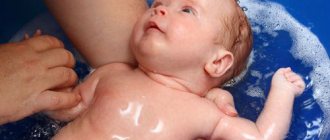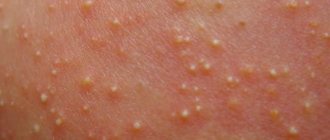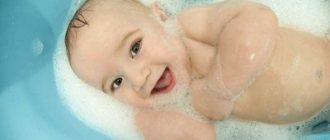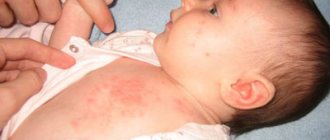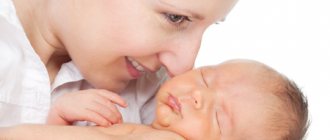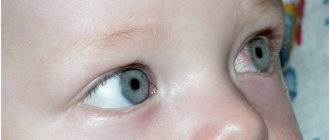Air baths: adoption, types, duration.
What points should you pay attention to to start hardening? Many have never done this. But as time has shown, in order to strengthen the immune system, you need to harden yourself.
Among hardening methods, air baths are often mentioned. How to use them? Just go out into the frosty air?
However, do not be confused by the apparent simplicity and “weakness” of this hardening method. Air baths are also called aerotherapy. This soft, and most importantly, accessible method has a fairly strong effect. Especially on the immune system.
How are air baths performed?
Taking air baths
, some caution should be exercised, especially for people sensitive to cold temperatures. With gradual hardening, you can later take air baths without any risk, even at temperatures below zero.
Some athletes do runs
in only shorts at 10-15° below zero. Consequently, on a frosty day the possibility of using air baths is not excluded, but this requires systematic preparation: constant hardening and developing a habit of low air temperatures.
It is recommended to start air baths
in the room and only after a while move to the open air;
It is good to combine an air bath with another, very simple procedure, which is an excellent hardening agent, namely rubbing the entire body with water of different temperatures. Such temperature irritation enhances the functional activity of the body and increases the tone of the nervous system. In our works, we have repeatedly
recommended the hardening technique that we developed based on many years of experience.
Using this method, air baths
taken outdoors, in the shade. It is preferable to choose a forest clearing, platform, seashore, lake, pond, shady garden, lawn, protected by trees or artificial devices in the form of a canvas canopy. As a last resort, you can use a balcony or even just a room for this purpose by opening windows and doors.
Start air baths
should start from lukewarm at a temperature of 20-22° and gradually move to a lower temperature - up to 7 and even 5°. Strong people, who at a young age systematically took air baths for many months, can take them at temperatures below zero for 5-10 minutes, while being on the move all the time. The first air bath should not last more than 10-15 minutes.
Then the duration of the sessions
increases daily by 10-20 minutes.
and depending on the characteristics of the body being hardened, it can take up to 2 or more hours. The time for taking air baths
is from 8 hours. morning until 6 o'clock. evenings. The best time is the morning hours. You can expose your body to ambient air at any time, but you should take into account the temperature (wind, humidity). The most favorable for taking air baths is moderately humid air at 60-70% relative humidity, without sharp temperature and barometric fluctuations. Take air baths once or twice a day.
When taking cool wines
You should not bring yourself to the point of chills; if you sweat too much during thermal baths, they should also be stopped. Taking air baths should be accompanied by movements; The younger the person taking the bath, the more energetic the exercises should be - running, gymnastics, bending and straightening the torso, etc.
Source
Tempering water procedures
General cool and cold water procedures cause significant heat loss by the body and the greater the colder the water and the longer the procedure, with the greatest heat loss occurring in the first minutes; later this process slows down. The repeated action of cold water creates conditions for the development of reactions that reduce heat transfer and increase heat production, i.e. helps improve metabolism and, consequently, increased formation of internal heat in the body.
Cool and cold hardening procedures can only be continued if the person does not experience a feeling of chills and if his skin is warm, especially on the extremities. The initial water temperature during these procedures should be indifferent (34-35°C) or pleasantly cool (30-33°C), allowing it to be tolerated completely calmly, without irritation. The use of hardening procedures eliminates sudden irritation with low temperature water. Only after a sufficiently long use of indifferent or cool water procedures (at least 1-2 weeks) is the water temperature gradually reduced to 14-12 ° C and lower, depending on the individual characteristics of the person.
Rubbing usually begins with the upper part of the body, and in the first days only the arms are wiped from the hands to the shoulder with a towel or sponge soaked in water at room temperature. They are performed with uniform, fairly fast movements. Then rub both hands with a dry terry towel until the skin turns slightly red.
After 3-5 days, they begin to wipe the upper body: quickly wipe their hands with a wet, slightly wrung out towel, mitten or sponge, then the chest and back, after which they rub with a dry towel, trying to cause redness of the skin.
After 2 weeks, wipe the entire body, starting with the arms, then the chest and stomach, and finally the back and legs. This entire procedure is carried out for no more than 2-3 minutes, it ends with vigorous rubbing of the entire body with a dry terry towel until a feeling of pleasant warmth appears.
For elderly and elderly people, as well as those with increased sensitivity to cold, wiping the body should be done only in parts: after wetting one hand, rub it with a dry towel, then wet the other hand and immediately dry it with a towel; in the same way, alternately wet and immediately rub the chest, stomach, back and each leg separately with a dry terry towel.
After 7-10 days of completely wiping the body, you need to start lowering the water temperature by 1°C every 3-5 days and thus gradually (over 30-40 days) bring the water temperature to 12-14°C. Continue to do a full rubdown with cold water every day for 2 months, after which you can move on to more powerful procedures (douches and baths).
Rubbing is done in the morning immediately after waking up or after morning exercises, since, in addition to the hardening effect, it has a tonic effect, gives vigor, relieves relaxation, sometimes observed after sleep.
With a slight modification, rubbing can be done in the evening before bedtime to calm nervous excitement, improve sleep and for sleep disturbances (insomnia, difficulty falling asleep, shallow shallow sleep, waking up too early). In this case, the water should not be cold, and after drying the skin, do not dry it with a towel, but put dry underwear on the damp body and immediately go to bed, tucking the blanket tightly on all sides.
The difference in the effect of morning and evening wiping is explained by the different influence of the final stage of the procedure. In the first case, intensive rubbing of the body with a dry towel until the skin appears reddens, simultaneously with blood flow, irritation of skin receptors, increasing overall motor activity and causing a feeling of freshness and vigor; in another case, gradual drying of the skin (under a blanket) does not cause irritation of skin receptors, but, on the contrary, promotes muscle relaxation, relieves tension and creates conditions for the development of sleep inhibition.
Air baths
Air baths are the most favorable and common means of hardening. By helping to remove vapors and gases from the surface of the skin, air baths have a certain hygienic significance for the body. In addition, air baths, due to thermal irritation of the skin, have a physiological effect on the body. This is expressed primarily in the reflex narrowing and expansion of blood vessels with subsequent improvement in the functioning of the extremely delicate and complex mechanism of thermoregulation (heat generation and heat transfer), increased muscle tone and endurance of the cardiovascular system, an increase in the content of hemoglobin and red blood cells in the blood and many other favorable changes in organism.
The main factor affecting humans is air temperature. Everyone knows that the face and hands are least protected from the cold. And although they often get very cold, a person avoids colds and remains healthy.
An air bath can be either general, if the entire surface of the body is exposed to air, or partial (local), if only a separate part of it, for example, the hands, is exposed. The hardening effect in this case is associated primarily with the difference in temperature of the air and the surface of the skin. The air gap between the body and clothing usually has a constant temperature of about 27-28 ° C. The difference between the temperature of a clothed person's skin and the surrounding air is usually small, and therefore heat transfer is almost imperceptible. As soon as a person is freed from clothes, the process of heat transfer becomes more intense. The lower the external temperature, the more cooling we are exposed to.
About the history of hardening
| Important! | |
| You can start hardening at any time of the year, but the summer months are most favorable for this. It should be done regularly, every day, regardless of the time of year. The intensity and duration of procedures must be increased gradually, otherwise complications are possible. | |
The benefits of hardening have been known since ancient times. One of the most famous historical examples is the experience of Ancient Sparta, in which, as Plutarch wrote, the hardening of boys, future warriors, began from infancy. From the age of 7, they were brought up in public houses in harsh, Spartan conditions - they walked barefoot in any weather and wore lightweight clothing, bathed in cold water, etc.
In Ancient Rus', hardening was also widespread: remember the rules of bath procedures! Cooling procedures after a bath - dousing, swimming in cold water, wiping with snow - activate and train thermoregulatory mechanisms, increase vascular tone and the body's resistance to adverse environmental factors and colds.
How and for how long should air baths be done?
Experts recommend starting hardening with air baths no earlier than 2 weeks after birth, unless there are additional contraindications. Parents need to follow several simple principles to make hardening correct, successful and enjoyable for both mom and dad and the baby:
- Air baths should be done regularly (preferably daily) and systematically. It is necessary to leave the baby naked up to 3 times during the day.
- Children should not be left unattended while taking a bath to minimize the risk of injury. It is advisable to talk to the baby all the time, distract him with a rattle, toys or a song.
- In the first months of life, you should not take air baths after bathing. A sharp change in temperature is a factor that provokes a cold.
- The room temperature should be at least 22 degrees, and the air should be fresh. Gradually you can lower it to 17-18 degrees.
- It is necessary to closely monitor the child’s well-being during the procedure. Constantly check that your nose and extremities are warm. The baby should not be pale, covered with veins and goose bumps, or tremble.
Why are they useful?
The main thing is to understand that an air bath is the safest and easiest way to harden and strengthen the immune system. When hardening with water, we inevitably encounter such inconveniences as the need to set aside time for a douche or a contrast shower, after which, on top of everything else, we need to wipe ourselves off, dry ourselves, and only then go about some business.
Air baths allow us to combine the hardening process with other household chores. Moreover, it is not necessary to be completely naked to the point of “what the mother gave birth in.” By exposing your torso or changing into a swimsuit and short shorts, you also take an air bath.
In addition, these procedures help relieve nervous tension after a working day, and, in general, strengthen the nervous system of the person who is engaged in them.
With a certain, methodical approach to performing air baths, blood vessels and the heart are strengthened.
In addition, an air bath is a way to allow your body to breathe fully.
. After all, the skin performs many functions in the body, including breathing.
Moreover, skin breathing is, in fact, such a powerful thing that some yogis (after, of course, many years of training) are able to almost completely do without pulmonary breathing, replacing it with skin breathing. Some are able to live by taking one breath every 5-15 minutes or even less!
The skin absorbs a significant proportion of the oxygen needed by the body's cells and releases an equally significant proportion of carbon dioxide from the total amount emitted by our body.
So don't underestimate air baths and their importance.
Other types of air hardening
In such conditions, children can safely be taken outside and try other types of hardening.
Ventilation of the room
A baby's need for oxygen is much greater than that of an adult due to the rapid development of the brain, so the room in which he is located must be frequently ventilated. In the warm season, you can ensure constant access of fresh air to the room, and in cold weather, when heating devices are operating, it is necessary to ventilate the room at least 5 times.
It is advisable to provide long-term ventilation (up to 30 minutes) in the room when the child is not present, especially in the evening before bedtime. In this case, you need to monitor the indicators on the thermometer. You also need to monitor another air parameter - humidity. It should be in the range of 50–70% so that the baby’s nose does not dry out. To do this, parents hang a device in the baby's room that measures air humidity - a hygrometer.
Winter walks
The air is fresher in winter, so winter walks are most useful for hardening. Before you go outside with your baby, you need to observe a few nuances:
- It is not recommended to walk in winter with a newborn baby up to 3–6 months;
- the air temperature should be no lower than minus 20–25 degrees and without additional negative factors - wind, snowstorms, drafts;
- the baby should be dressed comfortably so as not to sweat and freeze;
- It is better to cover the baby’s face with a thin diaper;
- the duration of the first walk should be no more than 5 minutes, then it can be gradually increased to 30 minutes or more;
- in one day you can go out into the fresh air up to 2-3 times;
- Constantly monitor the child’s condition, the warmth of the nose and hands, so as not to miss signs of hypothermia.
Sleeping in the fresh air
The most pleasant and relaxing pastime for a young mother and small child is a daytime nap outside. Parents need to choose a comfortable stroller in which the baby will sleep comfortably, and a quiet place for walks - a square, park or garden.
It is necessary to ensure that there is no draft in the stroller. If parents do not have the opportunity to walk outside, then a balcony is suitable for sleeping in the fresh air. In the summer, when the weather is hot outside, it is best to stay in partial shade and control the temperature inside the stroller so as not to overheat the baby.
When should aerotherapy not be used?
- acute febrile conditions
- exacerbation of chronic inflammatory joint diseases
- exacerbation of rheumatism
- neuritis, myositis
Aerotherapy is prescribed with caution to patients who have hypersensitivity to cooling and people over 60 years of age.
It is important that some types of aerotherapy are carried out only with the permission of a doctor, under
In order to avoid unwanted reactions of the body during or after aerotherapy, an important point is the correct determination of the degree of intensity of exposure, which is possible with an individual approach to each patient.
Contraindications to air baths and precautions
Before taking air baths, parents should take some precautions that will make the procedure enjoyable and truly beneficial. It is necessary to ensure the absence of drafts and wind, a comfortable temperature and sufficient attention. According to experts, absolute contraindications to air hardening are:
- viral disease (runny nose, sore throat, sore throat, cough);
- increased body temperature;
- a sharp negative reaction of the baby in the form of crying, screaming and whims;
- prematurity;
- presence of chronic diseases.
Source
Individual approach
As you know, no two people are alike. We differ in age, level of physical development, weight. The differences are also due to the structural features of the body, the properties of the nervous system, and living conditions. Moreover, people live in different climatic zones. Consequently, both the type and time of hardening procedures will be individual for each person. What is useful for one may be unbearable for another or, conversely, insufficient. Therefore, before starting the procedures, you should consult a doctor.
General principles
You need to start hardening as early as possible - from the first days after discharge from the hospital, but only if the child is healthy. Weakened children (premature babies, those suffering from malnutrition, rickets, allergic diseases, etc.) also need to be hardened, but this hardening must be gentle and must be carried out under the supervision of a doctor, taking into account the state of health and well-being of the child.
Hardening procedures that are recommended for the youngest children include: airing the room, walking, sleeping in the fresh air, air baths, bathing, wet rubbing, dousing with water, contrasting dousing of the legs and contrasting rubbing.
At first, all air and water procedures should be absolutely comfortable for the child. This is necessary to ensure a gentle adaptation of the baby to the new outside world, to prevent the child’s negative attitude towards these procedures and to eliminate stressful effects on his still very immature body. Then - very gradually and only if the baby is feeling well - you can move on to lowering the temperature of the air and water during hardening.
It is important to remember that the intensity of hardening should depend not so much on time and temperature, but on the well-being of the person being hardened. Under no circumstances should a child be allowed to become hypothermic.
There are three main rules of hardening that must be strictly followed:
- Gradualism. The transition from weaker hardening procedures to stronger ones should be gradual. This is especially important for young children, since excessively intense exposure will be stressful for the child and can lead to illness. In addition, the baby will remember negative impressions well and will then react negatively to the procedures.
- Regularity. Regular hardening procedures are possible only when they become firmly part of the child’s daily routine, along with such daily activities as washing, walking, sleeping, feeding, bathing, etc. If for some reason there is a break in hardening (for example, illness of the child), then after a break, hardening must again be started almost all over again - that is, with air and water temperatures that are quite comfortable for the child, and then gradually reduce them. It is believed that in adults, 3-4 weeks after the cessation of hardening, the developed resistance to cold sharply weakens, and in children in the first year of life, the disappearance of the adaptation effect occurs even faster - after 5-7 days. This means that hardening must be done constantly, otherwise there will be no lasting effect.
- Good health of the child. Any hardening procedure should be carried out only when the child is in good condition and in good mood. If the child does not feel well, is upset, shows a pronounced negative attitude towards the procedure, or is cold, then the hardening event should be rescheduled or completely excluded on that day.
Why is it necessary to harden?
Hardening is an extremely useful procedure, and here's why:
- The immune system is strengthened, which fights various diseases, including viral ones.
- The adaptation period to changes in the external environment occurs much easier and faster.
- Metabolism normalizes.
- Thermoregulation processes improve.
- The response of the vascular system to environmental changes is restored.
- The sleep pattern returns to normal, the baby’s appetite and well-being improves.
